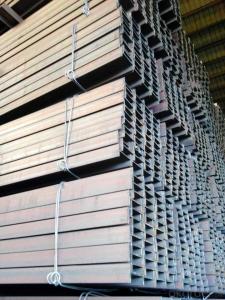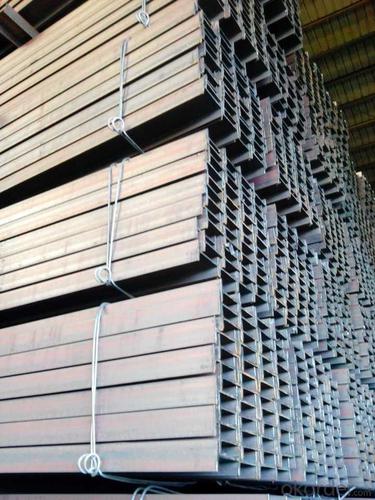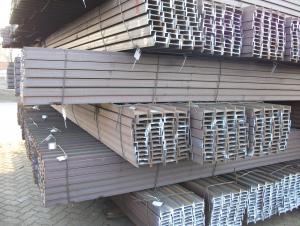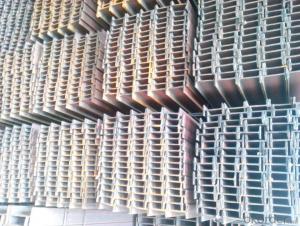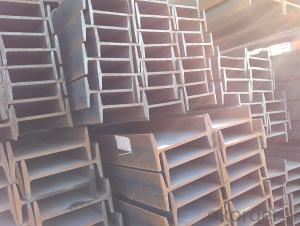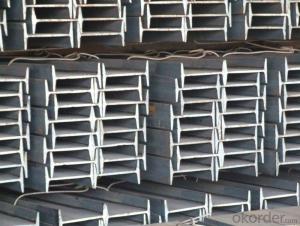Hot Rolled Steel IPEAA Beam EN Standard
- Loading Port:
- China Main Port
- Payment Terms:
- TT or LC
- Min Order Qty:
- -
- Supply Capability:
- -
OKorder Service Pledge
OKorder Financial Service
You Might Also Like
Product Description:
OKorder is offering IPEAA Beam at great prices with worldwide shipping. Our supplier is a world-class manufacturer of steel, with our products utilized the world over. OKorder annually supplies products to European, North American and Asian markets. We provide quotations within 24 hours of receiving an inquiry and guarantee competitive prices.
Product Applications:
1. structure construction and electronic tower building construction
2. bridge, trestle, autos, brackets, machinery
3.It is widely used in various building structures and engineering structures such as roof beams, bridges, transmission towers, hoisting machinery and transport machinery, ships, industrial furnaces, reaction tower, container frame and warehouse etc.
.
Product Advantages:
OKorder's IPEAA Beam are durable, strong, and resist corrosion.
Main Product Features:
· Premium quality
· Prompt delivery & seaworthy packing (30 days after receiving deposit)
· Corrosion resistance
· Can be recycled and reused
· Mill test certification
· Professional Service
· Competitive pricing
Product Specifications:
1.Standard: EN10025, GB Standard, ASTM
2.Grade: Q235B, Q345B, SS400, ASTM A36, S235JR, S275JR
Alloy No. | Grade | C | Mn | S | P | Si |
Q235 | B | 0.12%-0.20% | 0.3%-0.7% | <=0.045% | <=0.045% | <=0.3% |
3.Length: 5.8M, 6M, 9M, 12M or as the requriements of the customers
4.Sizes: 80mm-200mm
Dimensions | |||||
h | b | s | t | Mass Kg/m | |
IPEAA80 | 80 | 46 | 3.20 | 4.20 | 4.95 |
IPEAA100 | 100 | 55 | 3.60 | 4.50 | 6.72 |
IPEAA120 | 120 | 64 | 3.80 | 4.80 | 8.36 |
IPEAA140 | 140 | 73 | 3.80 | 5.20 | 10.05 |
IPEAA160 | 160 | 82 | 4.00 | 5.60 | 12.31 |
IPEAA180 | 180 | 91 | 4.30 | 6.50 | 15.40 |
IPEAA200 | 200 | 100 | 4.50 | 6.70 | 17.95 |
FAQ:
Q1: Why buy Materials & Equipment from OKorder.com?
A1: All products offered byOKorder.com are carefully selected from China's most reliable manufacturing enterprises. Through its ISO certifications, OKorder.com adheres to the highest standards and a commitment to supply chain safety and customer satisfaction.
Q2: How do we guarantee the quality of our products?
A2: We have established an advanced quality management system which conducts strict quality tests at every step, from raw materials to the final product. At the same time, we provide extensive follow-up service assurances as required.
Q3: How soon can we receive the product after purchase?
A3: Within three days of placing an order, we will begin production. The specific shipping date is dependent upon international and government factors, but is typically 7 to 10 workdays.
Images:
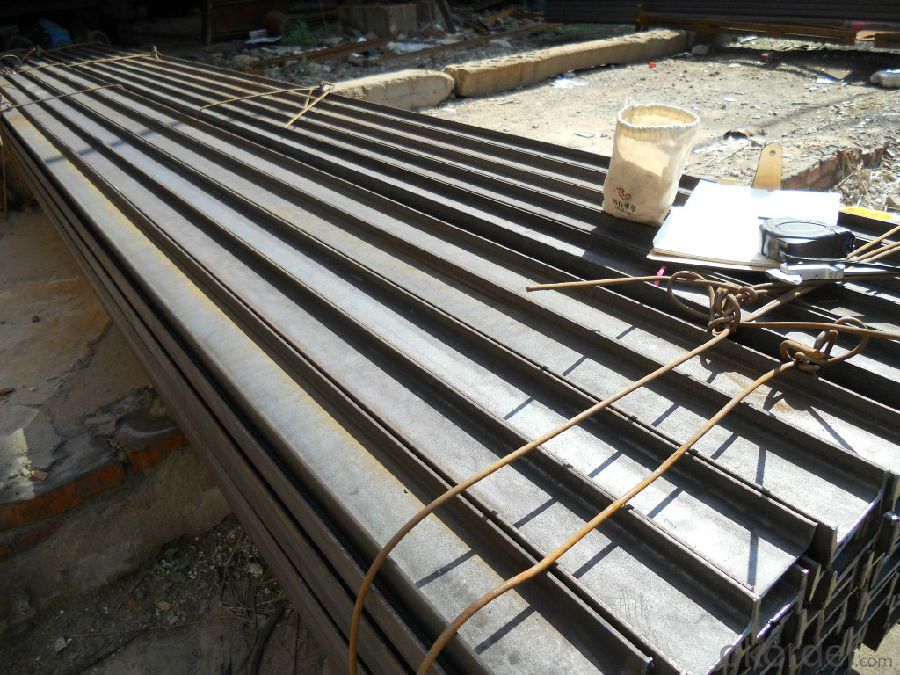
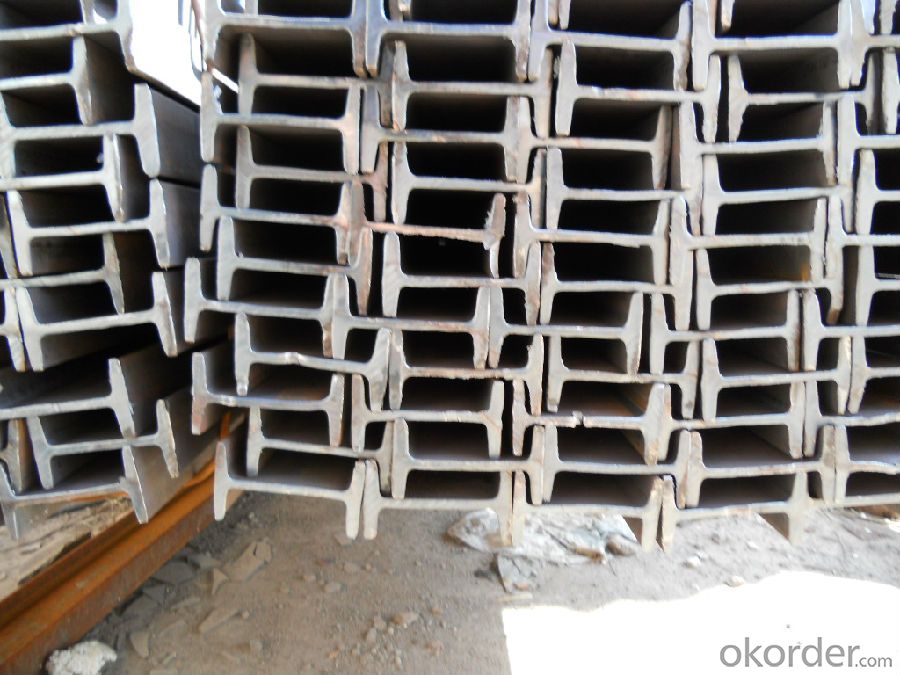
- Q: Can steel angles be used for architectural detailing?
- Yes, steel angles can be used for architectural detailing. Steel angles are versatile structural elements that can be used in various architectural applications. They provide stability and support to structures and can be used for framing, bracing, and reinforcing purposes. Steel angles can be seen in architectural details such as window frames, door frames, staircases, and handrails, among others. They offer strength and durability, making them suitable for both interior and exterior architectural designs. Additionally, steel angles can be easily customized and fabricated to meet specific design requirements, allowing architects to create unique and aesthetically pleasing architectural details.
- Q: Can steel angles be used as handrails or guardrails?
- Yes, steel angles can be used as handrails or guardrails. Steel angles are often used in construction and industrial applications due to their strength and durability. When properly designed, fabricated, and installed, steel angles can provide a sturdy and reliable support system for handrails and guardrails. They can be welded or bolted to other structural elements to create a secure and safe railing system. Additionally, steel angles can be easily customized to meet specific design and aesthetic requirements. However, it is important to ensure that the steel angles used meet the necessary safety standards and building codes to ensure the protection and well-being of individuals using the handrails or guardrails.
- Q: What are the different methods of fire protection for steel angles?
- There are several methods of fire protection for steel angles, including the use of fire-resistant coatings, intumescent paint, encasement with gypsum boards, and the application of fire-resistant sprays. These methods aim to slow down the heating of steel angles during a fire, allowing more time for evacuation and firefighting efforts.
- Q: Are steel angles prone to rust or corrosion?
- Yes, steel angles are prone to rust or corrosion. Steel, when exposed to oxygen and moisture, can undergo a chemical reaction called oxidation, resulting in the formation of iron oxide, commonly known as rust. This process can weaken the structural integrity of the steel angles over time. To prevent or minimize rust or corrosion, steel angles are often coated with protective layers, such as paint, galvanization, or other anti-corrosion treatments. Regular maintenance and inspection are also crucial to identify and address any signs of rust or corrosion early on to prolong the longevity and performance of steel angles.
- Q: What are the design considerations when using steel angles?
- When using steel angles in design, several considerations should be kept in mind. Firstly, the load-bearing capacity of the angles needs to be determined, considering factors such as the type and magnitude of the loads, as well as the desired safety factor. The dimensions and thickness of the angles should be chosen accordingly to ensure structural stability and prevent failure. Additionally, the connections and fasteners used to join the angles with other components should be carefully evaluated to ensure proper load transfer and minimize any potential weak points. Proper corrosion protection measures should also be incorporated to prevent rust and deterioration. Finally, factors like cost, availability, and aesthetic requirements may influence the selection of steel angles for a particular design project.
- Q: How do steel angles perform in high-pressure applications?
- Steel angles are widely used in high-pressure applications due to their excellent performance under extreme conditions. The structural design and composition of steel angles provide them with exceptional strength and durability, making them capable of withstanding high pressure without deformation or failure. The unique shape of steel angles, with their L-shaped cross-section, enhances their load-bearing capacity and resistance to bending. This makes them ideal for applications where high-pressure forces are exerted, such as in the construction of pressure vessels, pipelines, and hydraulic systems. Steel angles are typically manufactured from high-strength carbon steel, which possesses inherent toughness and resilience. This material composition enables steel angles to maintain their structural integrity even when subjected to the intense forces associated with high-pressure environments. Furthermore, the versatility of steel angles allows for customization and adaptation to specific needs. They can be fabricated in different sizes, thicknesses, and lengths to accommodate varying pressure requirements. This flexibility ensures that steel angles can be tailored to specific applications, further enhancing their performance in high-pressure scenarios. In addition to their mechanical properties, steel angles also exhibit excellent corrosion resistance. This is crucial in high-pressure applications, as the presence of corrosive substances can deteriorate the structural integrity of components. The inherent corrosion resistance of steel angles prevents degradation over time, ensuring their long-term reliability and performance. Overall, steel angles are highly reliable and effective in high-pressure applications. Their exceptional strength, versatility, and corrosion resistance make them a preferred choice in industries where pressure containment is critical. By utilizing steel angles, operators can trust that their systems will perform reliably and safely under extreme pressure conditions.
- Q: Can steel angles be drilled or cut?
- Yes, steel angles can be drilled or cut. Steel angles are a versatile structural material that is commonly used in various construction and manufacturing projects. They can be easily drilled to create holes for bolts, screws, or other fasteners. Additionally, steel angles can be cut to specific lengths or shapes using tools such as saws, plasma cutters, or shears. The ability to drill or cut steel angles makes them highly adaptable and suitable for a wide range of applications.
- Q: What is the difference between hot-rolled and cold-rolled steel angles?
- The main difference between hot-rolled and cold-rolled steel angles lies in the manufacturing process. Hot-rolled steel angles are formed at high temperatures, making them less precise in terms of dimensions and surface finish. Cold-rolled steel angles, on the other hand, are formed at room temperature, resulting in more precise dimensions and a smoother surface finish. Additionally, hot-rolled steel angles are generally more cost-effective, but cold-rolled steel angles offer improved strength and durability.
- Q: Can steel angles be used in high-temperature environments?
- Steel angles can be used in high-temperature environments, but their performance depends on the specific grade of steel being used. Some steel angles are specifically designed for high-temperature applications and can withstand extreme heat without significant distortion or structural failure. These high-temperature steel angles are typically made from alloys that have excellent heat resistance properties, such as stainless steel or nickel-based alloys. However, it is important to consider the operating temperature and duration of exposure when selecting steel angles for high-temperature environments. Prolonged exposure to high temperatures can still lead to some degradation of the material, including oxidation, reduction in mechanical properties, or even melting in extreme cases. To ensure the suitability of steel angles in high-temperature environments, it is recommended to consult with experts or engineers who have knowledge of the specific application and can provide guidance on selecting the appropriate grade of steel angle. Additionally, regular inspections and maintenance are crucial to identify any signs of degradation or wear caused by high temperatures.
- Q: Can steel angles be painted or coated?
- Yes, steel angles can be painted or coated. Painting or coating steel angles can provide several benefits such as protection against corrosion, enhanced aesthetics, and improved durability. Prior to painting or coating, it is important to properly clean and prepare the surface of the steel angles to ensure good adhesion of the paint or coating. This typically involves removing any rust, grease, or dirt, and applying a suitable primer. Once the surface is properly prepared, a variety of paints or coatings can be applied, such as epoxy, polyurethane, or powder coatings. The choice of paint or coating will depend on the specific requirements of the application, such as the level of corrosion resistance or desired appearance. Overall, painting or coating steel angles is a common practice to enhance their performance and prolong their lifespan.
Send your message to us
Hot Rolled Steel IPEAA Beam EN Standard
- Loading Port:
- China Main Port
- Payment Terms:
- TT or LC
- Min Order Qty:
- -
- Supply Capability:
- -
OKorder Service Pledge
OKorder Financial Service
Similar products
Hot products
Hot Searches
Related keywords
